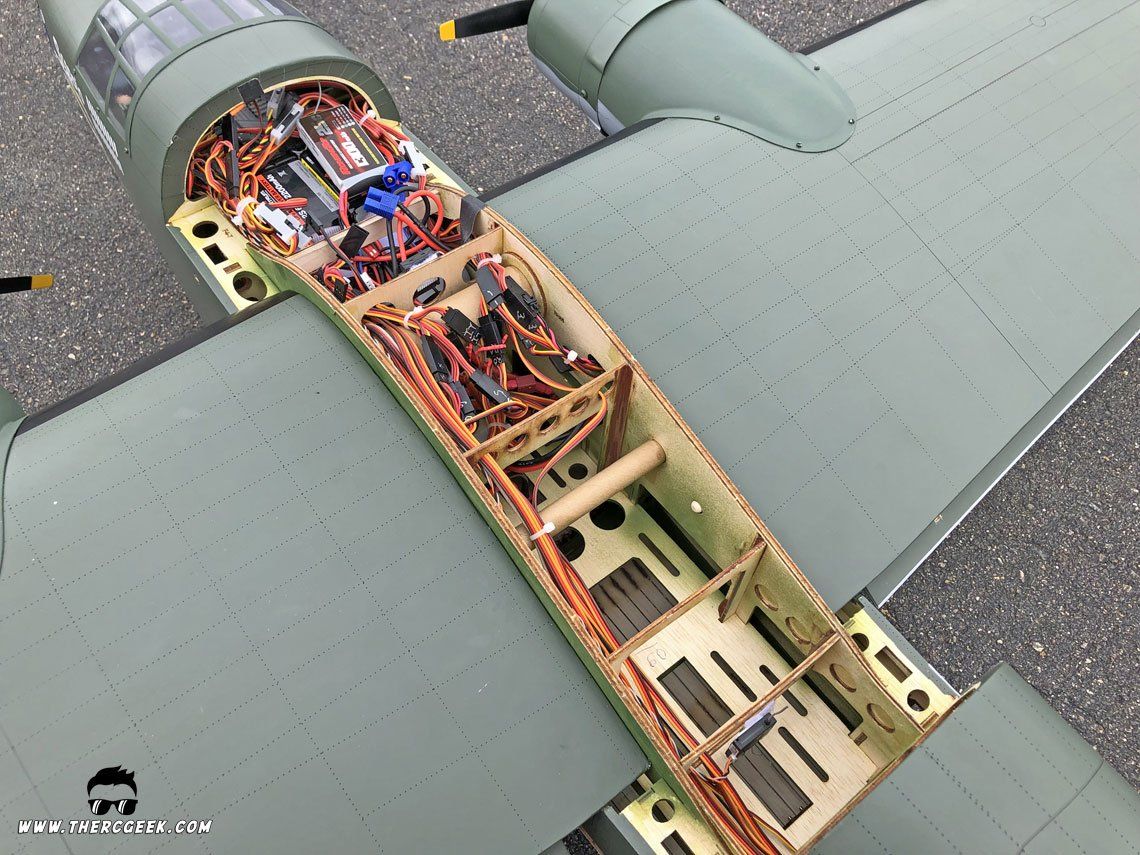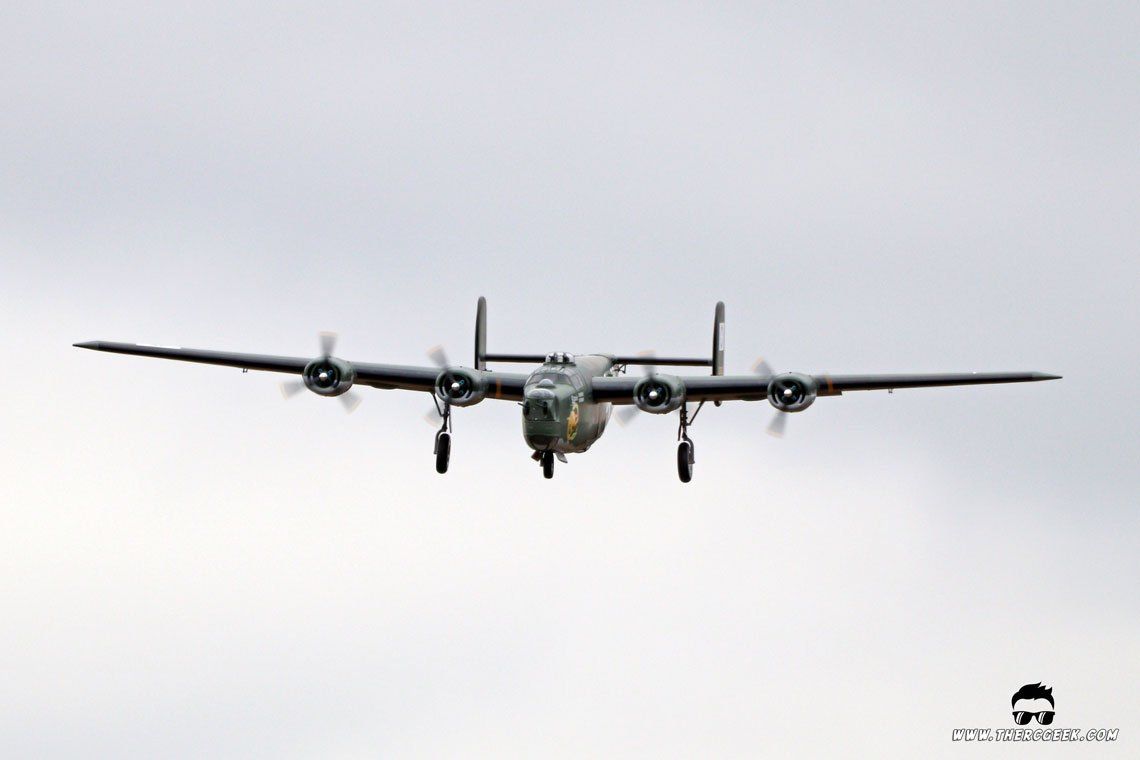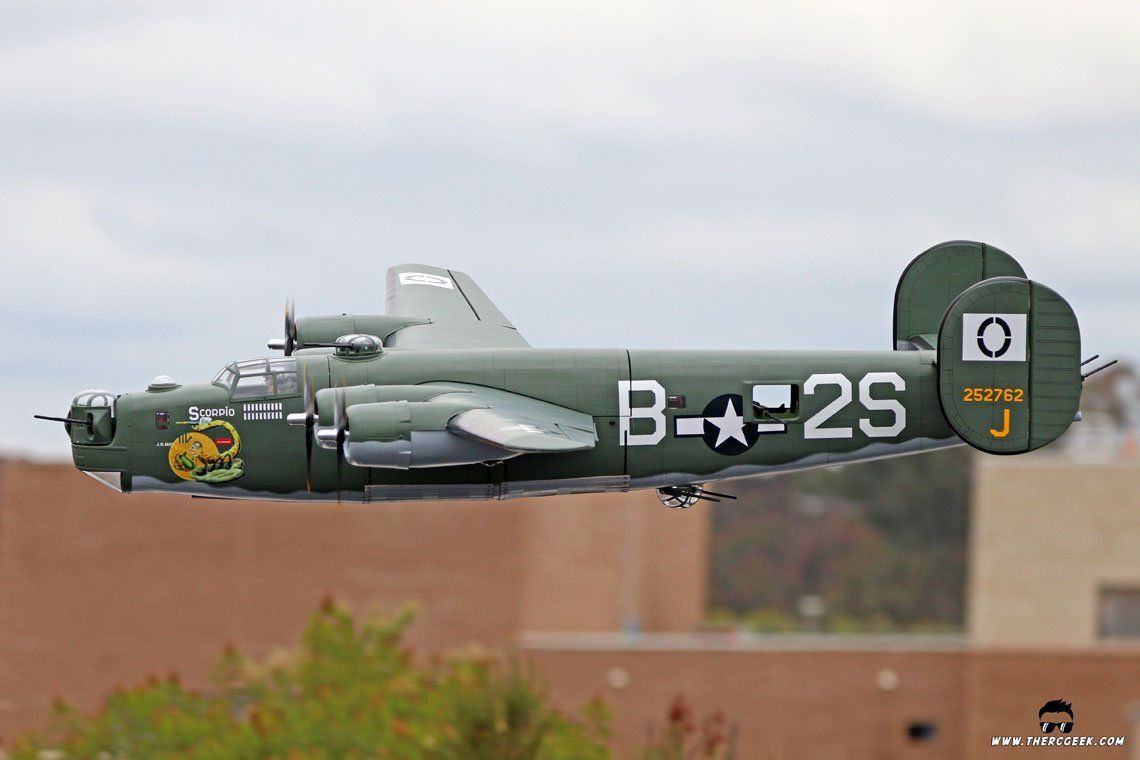The RC Geek Blog
By: Chris Wolfe
This is where the work pays off!
To close the loop on the on the VQ Warbirds B-24 Liberator, this week we're going in depth on the radio setup, CG and flying of this beautiful scale model! This is such an impressive airplane and it truly does not disappoint in the air. This is one that I've thoroughly enjoyed having it in my hangar and I'm looking forward to bringing it out to some events later this year.
Interestingly, when mentioning heavy bomber aircraft of World War II, undoubtedly, the first bomber that comes to many peoples’ minds is the Boeing B-17 Flying Fortress. However, few realize that the Consolidated B-24 Liberator was built in greater numbers than any other US bomber of WWII. Given the B-24’s distinctive twin rudder design and high aspect ratio “Davis” wing, the 4-engine heavy bomber provides an unmistakable shape. The airplane was designed for a purpose and it served that purpose well throughout the war with over 18,500 total B-24s from 1940-1945. The B-24 served in every branch of the American Armed Forces during the war and in fact, offered greater range, greater speed, and greater bomb load capacity than the B-17.
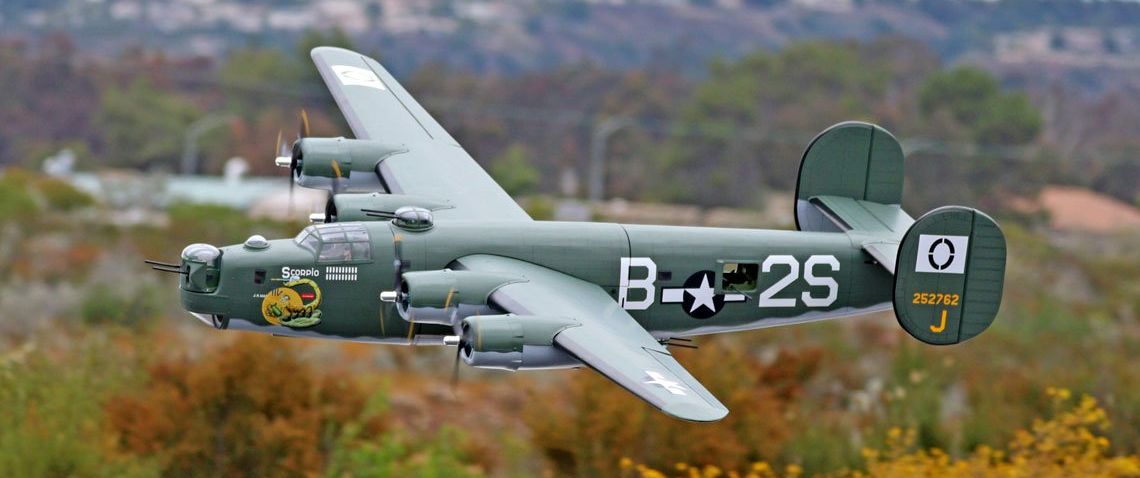
WHAT'S IN THE AIRPLANE
To recap from the assembly review, this B-24 Liberator is a great sized ARF of all wood construction coming in at a 110" wingspan. At final ready to fly weight of 26.5 lb the airplane doesn't even notice it at all in the air. From day 1, this airplane flew straight as an arrow requiring only just a couple clicks of aileron trim on the maiden. The power from the 4 Himax motors and Master Airscrew props feels absolutely perfect for the airplane as it has plenty of thrust at full throttle, but still cruises around at partial throttle easily and efficiently. Here are the final specs and equipment that were used in the airplane:
- RADIO - Spektrum Dx18, Spektrum AR12310T 12-Channel PowerSafe Receiver
- RECEIVER BATTERY - 2x Spektrum 6.6V 2200mah 2s LiFe Battery, 1x E-flite 25c 3s 800mah Lipo Battery and Castle Creations BEC set to 9.0v for retracts
- SERVOS - Hitec D-645MG (ailerons, elevator, steering) and Hitec D-85MG (flaps and rudders) servos
- MOTORS - 4x Himax HC3528-1000 outrunner motor
- FLIGHT BATTERY - 4x Roaring Top 35c 4s 4300mah Lipo Battery
- ESC - 4x Castle Creations Talon 60
- PROPELLERS - 4x Master Airscrew 10x7 3-blade
- RETRACTS - Robart Electric with Scale Wheels & Struts
- TURRET CONTROLLER - 2x Random Servo Motion Generator
- MARKINGS - 834th Bombardment Squadron “Scorpio” (custom markings from Callie-Graphics)
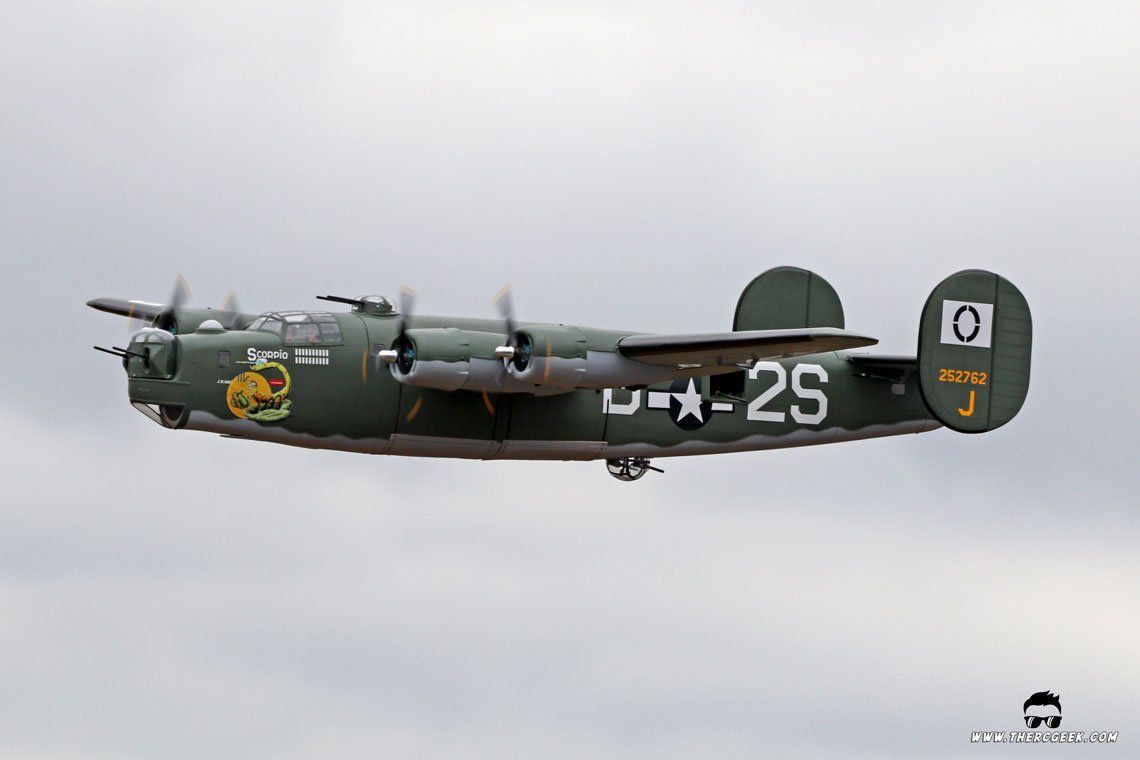
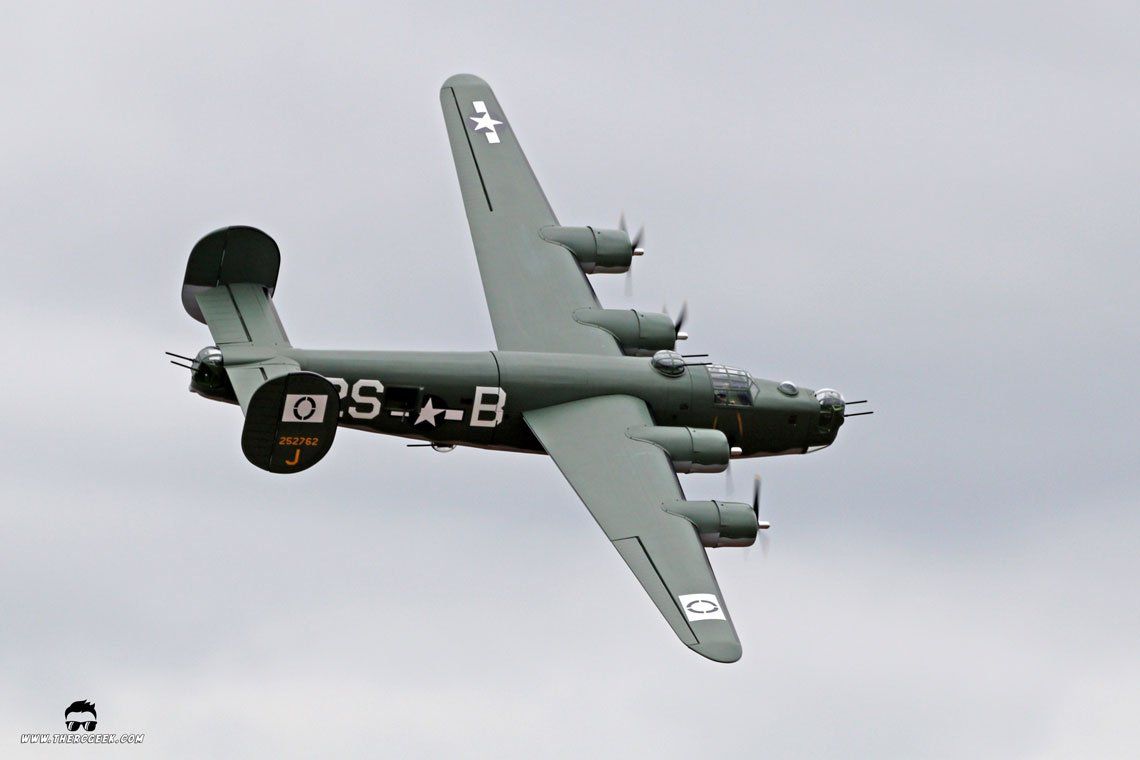
AIRCRAFT SETUP & CG
In flying this airplane, I found that the recommended CG and control throws in the manual were spot on for the model and I found no reason to adjust any of them. The airplane does have a big high aspect ratio wing and you do visually see the resulting adverse yaw in flight, so I did find myself kicking the rudder around a bit more than typical in the turns on the first flight. To simplify that, I added a 25% rudder/aileron mix which helps auto coordinate the turns and make it look more correct as it maneuvers in the air with less work from me. Additionally, a 10% down elevator mix with flaps was necessary for trimming the landing configuration. Here are the control throws I'm using:
- Elevator - 19mm up/down with 5% expo
- Aileron - 13mm up/down with 0% Expo (25% rudder/aileron mix to auto coordinate the turns)
- Rudder - 28mm left/right with 0% Expo
- Flaps - 11mm half with 1mm down elevator mix and 30mm full with 3mm down elevator mix
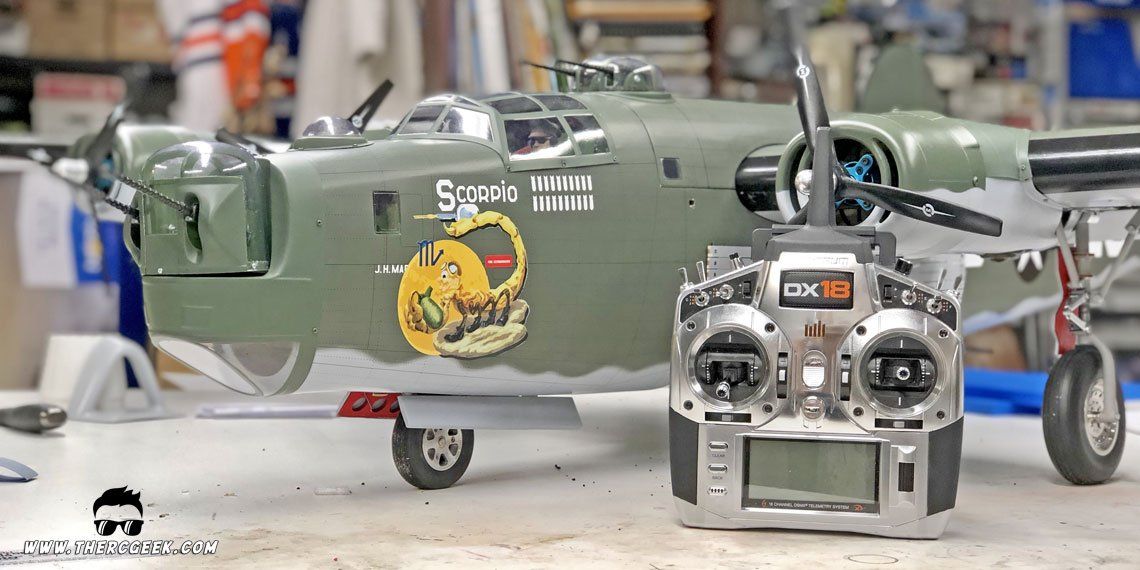
The CG location recommended in the manual is 100mm-107mm as measured from the wing leading edge root aft. Mine came in at about 105mm and I found this to feel about perfect for the airplane from day 1. This being a heavy bomber is not one for extreme aerobatics, so you want a nice stable aircraft that is docile to fly in the air and this gives you that.
Space inside the B-24 fuselage is a bit limited, so all components that could be placed forward of the CG were. I'm using 4x 4s 4300mah batteries in the airplane which are pushed as far forward as they can go in the main fuselage area, accessed through the main over wing hatch. Additionally, the receiver and retract controller are placed as forward as they can go as well, but even so, about 1.5lb of weight was necessary to be added into the nose to attain the CG.
FLYING THE VQ WARBIRDS B-24 LIBERATOR
The reward for any project is getting it in the air and the presence that this B-24 Liberator has in the air is just fantastic! What really strikes me is how scale the airplane appears in the air. It legitimately looks like a real B-24 maneuvering in flight, especially at a bit of a distance. The airplane is responsive in the control (I've even rolled it!) and flies extremely true in the air and the power provided from the 4 Himax motors feels perfect. Point it where you want it to go and that's where this B-24 goes. My timer is set at 5 minutes, which is my indication to setup for landing and the batteries are showing over 3.8 v/cell which means that there's plenty of flight time available should I want it. All that's missing is a bomb drop which I will get to at some point. :)
The B-24 has a nice wide gear stance so tracking on the ground is rock solid making takeoffs an easy prospect. I like to use partial flap and try and execute a nice scale takeoff at partial throttle when I can. In the approach configuration with full flaps and the gear down, the B-24 flies just as predictably as it does up and away. The airplane settles into a nice descent requiring about 1/3 throttle or so and slows down beautifully in the flare to touchdown. Touch and goes are another one that I enjoy with the model as well!
FINAL THOUGHTS
The VQ Warbirds B-24 is a graceful and beautiful flying warbird. The airplane is extremely smooth and predictable and flies much like a heavy trainer in the air. The flaps work well on the landing allowing for a nice gentle approach and the Robart struts provide great shock absorption in the process. Until next time, I'll see you at the field!
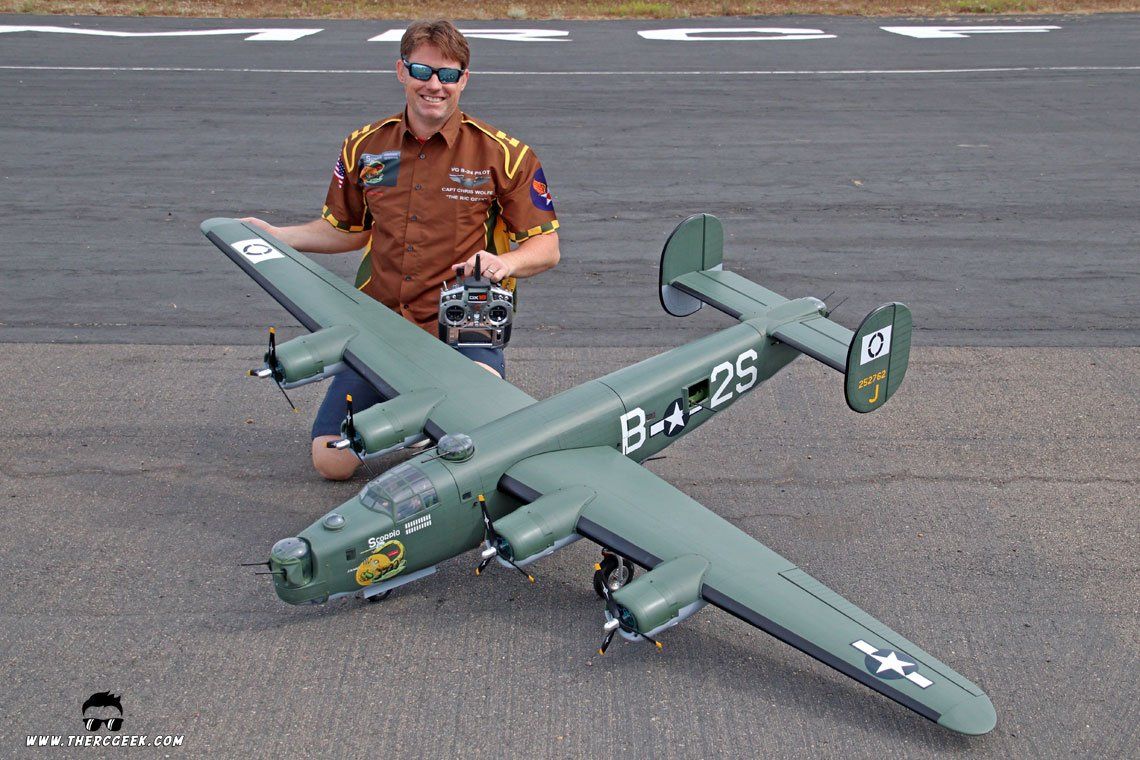
The RC Geek Blog is your place to learn about all aspects of the RC hobby. Learn to build, design, drive or fly that RC project you’ve always wanted to build, but have been intimidated to try. This blog is here to help you on your journey and provide tips and tricks as you go! My hope is to inspire builders both experienced and new! So, welcome, please look around, it’s an exciting beginning! I’m currently documenting my latest competition scale RC jet build, a Mark Frankel F4D Skyray, along with some other fun tips and videos. If you can’t find what you’re looking for on this front page, click on any of the categories to the right and it will show just posts related to those categories. Please feel free to add comments and/or contact me directly if you have questions, I’m here to help! And don’t forget to check out my YouTube Channel, I post new videos every week!
Subscribe To Our Blog Now








